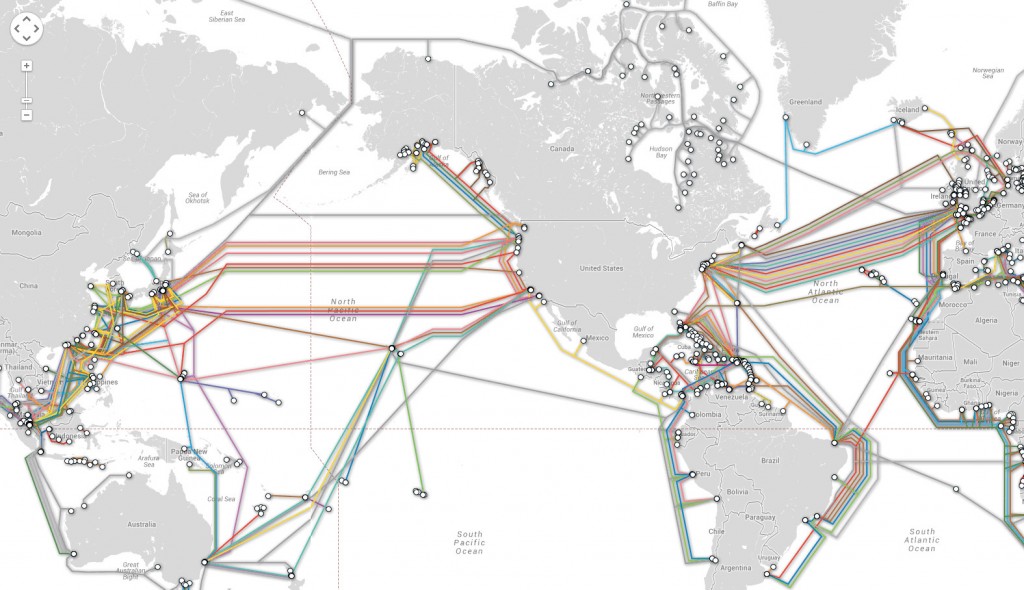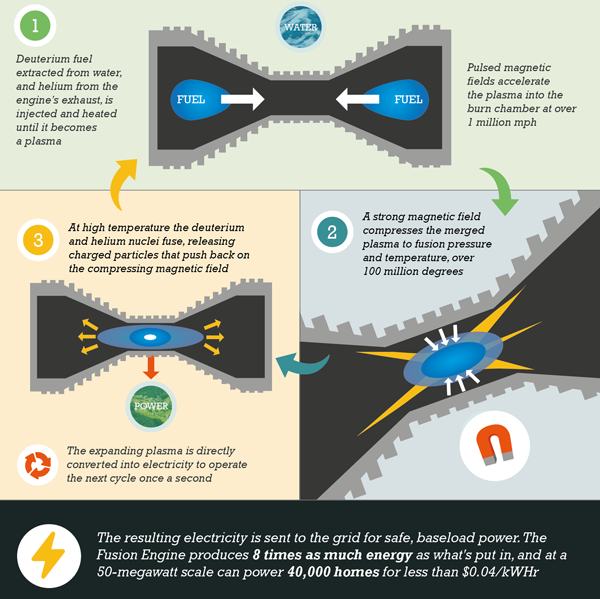
Under the Sea
We’ll start this week’s roundup with three (!) separate stories about undersea communications cables. First up, a Canadian company named Arctic Fibre will soon be laying a fibre-optic cable thousands of miles long connecting the UK to Japan through the Canadian arctic. This is the first time such a connection will have been made, primarily because until now there was a lot of ice in the way (thanks, global warming!). The best part of this is that it will create redundancies in the internet to better protect it in case of damage.
Check out the route here at the coolest. site. ever. (if you love undersea cables) the Submarine Cable Map.
Our second cable story is that Google, in partnership with five Asian telecom companies and NEC, is reported to be funding the construction of a new, blisteringly-fast 60-terabit-per-second undersea cable from California to Japan. The cable, nicknamed FASTER, should cost in the ballpark of $300million, and once again demonstrates Google’s commitment to its general philosophy: more, faster internet for more people = more revenue.
Finally, the Guardian is reporting this week that Google is reinforcing its undersea cables to ward off the current threat of — wait for it — shark attacks. The move comes after a series of attacks (one filmed) and will lead to the coating of new cables in a kevlar-like material to protect them. Though the precise cause is unknown, it’s thought that perhaps the cables are generating a magnetic field that leads the sharks to think of them as fish-like prey. Either way, Google’s got this one, guys.
Maryam Mirzakhani
Every four years since 1936, the International Mathematical Union has handed out 2-4 “Fields Medals,” officially known as the International Medal for Outstanding Discoveries in Mathematics. This year, for the first time, one of the recipients is a woman. Professor Maryam Mirzakhani of Stanford University, who’s receiving the award for her work on the symmetry of curved surfaces, is also the first Iranian-born winner of the Fields Medal. Nature.com has more coverage of the story, as well as information on the other two winners this year, Artur Avila of the Institute of Mathematics of Jussieu in Paris, and Manjul Bhargava of Princeton University. The Guardian has a brief interview with Mirzakhani that’s worth a look as well.
How Ebola Attacks
As the ebola outbreak continues to ravage western Africa — unhelped by locals acting dangerously out of fear — New Scientist has an article on the relatively recent discovery of just how the virus functions. While the symptomatic presentation has been known since the first major outbreak in 1976, the exact mechanism by which the virus bypasses the immune system was only recently uncovered. In this week’s issue of the journal Cell Host & Microbe, the researchers from Washington University and the Icahn School of Medicine at Mount Sinai (NY) reveal that the virus counteracts the effects of interferon in the bloodstream, dampening the immune system’s response. Knowing this could help scientists find new and better ways to fight the virus, which with each passing day is doing more harm. Check out the article at New Scientist, as well as the article at Cell if you’re feeling brave.
Meanwhile, the WHO is considering using “convlescent serum” in the fight against the virus: antibody-containing plasma donated by those who’ve survived the illness as an attempt to shore-up the defenses of the still-ill. Science has the story.
Venture Capital for Fusion
TechCrunch is reporting this week that venture-capital companies Y Combinator and Mithril Capital Management are investing in a “small-scale” nuclear fusion startup named Helion Energy. The stated difference between this version and ITER’s ever-retreating goal (now 2027) is in the size: rather than aiming for a massive, continuous, turbine-powered generator on the scale of a current gigawatt-generating reactor, the Helion reactor would run on a self-powering, one-pulse-a-second, turbine-free model at the 50-megawatt scale. Check out their infographic below:
I don’t know whether it’ll work, but I’d love to see them succeed. Check out the details over at TechCrunch.
Retreating from Rising Seas
In what’s likely to become a more common occurrence in the future, Scientific American is reporting that a township in the Solomon Islands is set to become the first in the Pacific to relocate thanks to climate change. The town of a thousand people, named Choiseul, is located on Taro Island, and sits at under 2m above sea level. The relocation will take place over decades, and will move them to the adjacent mainland, but it’s sure to be only the first of many, with a projected global sea level rise of one to four feet by 2100.
Best of the Rest
This week saw other stories about: baking with cricket flour; the 20th anniversary of the smartphone; the first test-tube baby penguin; putting “vantablack” in space; and the impending return of Doctor Who to your living room (no spoilers).
I leave you this week with a clip of a fan-made intro to Doctor Who that was so good that Stephen Moffat asked if he could steal it (the answer was yes). Enjoy, and have a great week.

